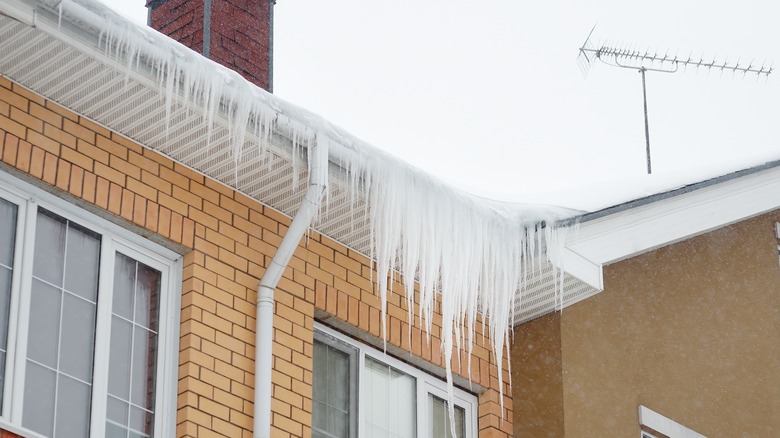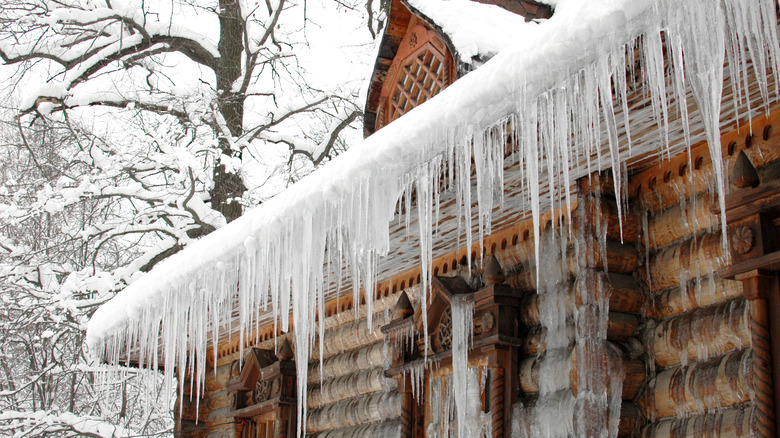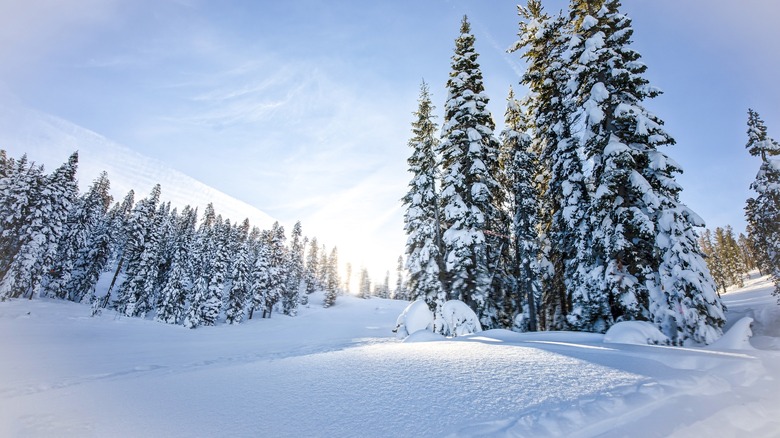The Science Behind Why You Should Avoid Icicles And Snow
There's a lot to love about the winter season (and a lot to hate, but that's a topic for another time). Even those who prefer to stay inside and enjoy hot chocolate will have a hard time denying that the natural beauty that the season provides us can be stunning. A fresh blanket of snow, perhaps with some icicles glistening in the sunlight, makes for a perfect metaphor for the season.
Some people, children in particular, may be tempted to eat icicles and snow. And on the surface at least, it makes perfect sense: Icicles and snow are both just frozen water manifested in different ways through different natural processes. It should be no different than eating an ice cube, for example, or an unflavored snow cone. As it turns out, however, there are going to be "flavorings" — and here "flavorings" means "unwanted pollutants" in both, with more and worse adulterants depending on how and where you find both things. Long story short: Icicles should be avoided at all costs, while eating snow should be approached with extreme caution.
Just Leave Icicles Alone
Icicles should generally just be left alone by humans, neither eaten nor, really, approached at all. If you take a quick look at the image above, you can see why:Icicles are effectively giant spears, sharper at the bottom and heavier at the top, like an awl only writ large and made of frozen water. Should one fall on you, well ... while hard data is difficult to come by, there's no denying that people are killed or maimed by those things not infrequently, according to East Idaho News.
Eating them is an equally bad idea, according to IFL Science. Think about how they form (at least, in the environment in which you're most likely to encounter them). Water falls on the roof of a building, such as a house, rolls down to the edge, and then freezes. Well, what's on a roof? Bird poop, that's what. "Bird poop. A lot of it. And that water picks it up and freezes it in the ice. You're eating poop," said meteorologist Katie Nickolaou. The British government warns that exposure to contaminated bird droppings can cause psittacosis or salmonella. "A high price to pay for a lolly that tastes primarily of roof water," as IFL Science describes it.
Snow Is A No-Go Also
So what about winter's other manifestation of frozen water: snow? Is snow safe to eat? Well, yes and no.
You've certainly heard the old canard "don't eat yellow snow," and for good reason. If the snow is yellow, that means an animal, likely a dog but really it could be anything — even a human — has peed on it. That's simply disgusting, and also possibly exposes anyone silly enough to eat it to infection.
White snow is probably best avoided as well. At least, in urban environments. In an academic paper published in the journal Environmental Science: Processes & Impacts, a team of researchers noted that urban snow had enough pollutants in it to "[potentially] influence human health."
As for snow out in the woods, far away from human activity, you may have fewer urban pollutants, but that doesn't mean eating it is a good idea. As Sunny Sports notes, your body has to work harder to melt the snow when it's in your mouth, meaning that, in a survival situation, it's not going to re-hydrate you, but rather do the opposite. However, if you're able to melt it via, say, a fire or concentrated sunlight, pure white snow is probably OK in a do-or-die situation.


